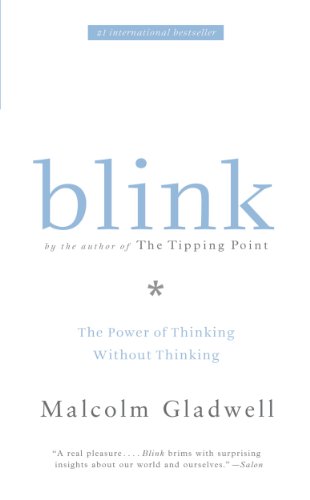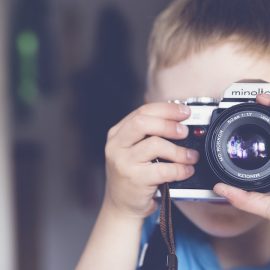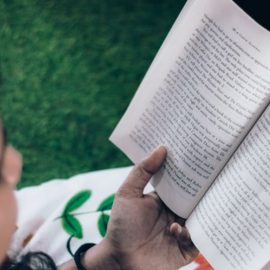

This article is an excerpt from the Shortform summary of "Blink" by Malcolm Gladwell. Shortform has the world's best summaries of books you should be reading.
Like this article? Sign up for a free trial here .
Do you spend a lot of time making decisions? Do you ever wonder if there’s an easier way to make a choice? There are many types of decisions, and the best decision-making strategy in one situation may not be successful in another.
We’ll look at the two basic types of decisions and discover why sometimes the best type of decision is the one that takes the least amount of conscious thought.
Two Types of Decisions
There are two types of decision-making processes: conscious and unconscious.
We’ve been taught that the types of decisions that are soundest are the types that take lot of time and effort to make. But what do studies show about how our snap judgments compare to our rational, well-thought-out decisions?
Our snap judgments can be just as effective and accurate as decisions that are deliberate and well thought out. Further, we have power over our intuitive decisions, even though they’re unconscious and seem out of our control.
Both logical, conscious types of decision-making and snap judgments have their time and place. Our brain uses two broad strategies for making decisions:
Type of Decision #1: Conscious Thinking
This type of decision is also known as rational decision making. When we think consciously, we use past experiences and current information to make a decision logically.
The Pros of Conscious Thinking as a Type of Decision
- This type of decision-making can lead to good decisions.
- We feel confident in these decisions. They make sense to us.
The Cons of Conscious Thinking as a Type of Decision
- This type of decision-making is slow.
- It requires a lot of information.
- It doesn’t work well under stress.
Type of Decision #2: Unconscious Thinking
This type of decision is variously known as the adaptive unconscious, intuition, and making snap judgments. When we think unconsciously, we make decisions without understanding why, or even realizing we’ve made them.
The Pros of Unconscious Thinking as a Type of Decision
- This type of decision-making can also lead to good decisions.
- It’s quick, taking mere seconds.
- It’s sophisticated, efficient, and filters irrelevant information for you.
- It’s generally more effective under stress than conscious thinking.
The Cons of Unconscious Thinking as a Type of Decision
- This type of decision-making is mysterious. We often have no idea how we know what we know, or how we arrived at a decision. This can be frustrating and lead to unhelpful, or even detrimental, rationalizing.
- It requires that we be aware of our feelings, since these are the unconscious mind’s language of communication.
- We have to learn to trust our instincts, and that’s hard.
- We also have to learn when to trust our instincts. Our unconscious minds can malfunction due to time pressures or deeply held biases.
We use these two different types of decisions in different situations. We know when we’re thinking consciously, developing a theory and weighing the pros and cons. But we often don’t know when our adaptive unconscious is working, and it’s working all the time. It’s like a quiet computer processing all the information that keeps us functioning but that would take too long to process consciously.
While both conscious and unconscious types of decisions have benefits, we assume that conscious thinking is better. The following example shows that unconscious thinking can be just as good as, or better than, conscious thinking.
Example of Unconcious Types of Decisions: Rating a Professor
Sometimes, the unconscious mind is just as good as the conscious mind at assessing someone’s competence. It may be more efficient to use the unconscious type of decision.
A psychologist compared two sets of ratings of college professors.
- Set #1: These ratings came from students who took a full semester of classes with the professor. These students had the time and experience to use their conscious minds to rate the professor.
- Set #2: These ratings came from students who watched a two-second video clip of the professor, with the sound off. They had no other experience with the professor. These students didn’t have the time or experience to use their conscious minds to rate the professor. Consequently, they had to use their unconscious minds, or intuitions.
Results: The ratings from both sets were astonishingly similar. We can make a judgment about a teacher’s competence after two seconds, and that judgment will likely be very close to the judgment of someone who spends an entire semester in that teacher’s class.
The Benefits of Unconscious Types of Decisions
1) They thin-slice: Our unconscious minds “thin-slice,” or find patterns in situations based on thin slices of experience.
Unconscious types of decisions don’t require a lot of information. When we thin-slice, our unconscious picks out the information that is relevant and leaves the rest. This allows us to ignore distracting, superficial details and get to the heart of a problem or choice.
For example, studies show that we can accurately infer the personalities of strangers just by exploring their bedrooms for 15 minutes. We take a thin slice of the stranger’s experience (in the form of his or her room) and use the information we find there to make generalizations about that person. Much of this inference work happens unconsciously. While a person’s bedroom may seem like a superficial slice of his or her experience, its items and their arrangement can be more telling than the barrage of information you’d get from spending time with that stranger in person.
2) They work unconsciously and quickly: The unconscious mind processes little bits of information and makes decisions about them all the time, without our being aware of it. This frees up the conscious mind to focus on tasks that only it can complete, like those involving logic.
For example, people with damage to the part of the brain that unconsciously prioritizes information can’t make snap judgments. They give equal weight to minor and major details when making a decision. This greatly slows down the decision-making process.
The Disadvantages of Unconscious Types of Decisions
1) They can’t be explained: When we try to explain how we arrive at an unconscious decision, our explanations are inaccurate and sometimes problematic.
For example, when we attempt to solve insight puzzles (puzzles only the unconscious mind can solve), explaining our strategies hurts us. As soon as we try to elucidate the mystery of our unconscious processes we disable them.
2) The process of thin-slicing can get interrupted: Usually, thin-slicing uncovers the deep truths and relevant details needed to make a wise decision. But stress, time pressures, and biases can interrupt the usually efficient and deep process of thin-slicing, leaving us with snap judgments made on irrelevant surface details.
For example, Warren Harding looked so presidential that voters were fooled into thinking he’d make a good president. Their unconscious bias for a leader that was handsome and dignified-looking led them astray. This bias interrupted the process of thin-slicing, producing an unreliable snap judgment. They based their decision on surface details, voting into office one of the worst presidents in American history.
How Can We Improve Unconscious Types of Decisions?
Be frugal: Don’t overwhelm your unconscious with too much information. Find the most essential data points and make a decision from those. This type of decision is best made with little information.
Prime yourself and change your experiences: Once you understand what your unconscious biases are, seek out images and stories that oppose these biases. For example, if you find that you unconsciously associate CEOs with males, research female CEOs and place their images and stories where you’ll see them regularly. To broaden your horizons, read books, watch movies, and spend time with people that counter your implicit associations. This type of decision is susceptible to bias.
Lay the groundwork: Think ahead about situations that might require you to make unconscious types of decisions. Develop guidelines for how you’ll behave in those situations, giving structure to your spontaneous decisions. For example, if you tend to get overwhelmed by the meal options at restaurants, decide beforehand that you’ll limit yourself to perusing the menu for 20 seconds before relying on your gut reaction to decide your order. This type of decision requires preparation to be most effective.
Don’t rationalize: Admit that you don’t always know how or why you arrive at the decisions you do, and be okay with that. Why you make these types of decisions won’t always be clear.
Rehearse: Practice making decisions in environments and circumstances that mimic stressful situations. For example, you might rehearse giving a work presentation in the midst of unexpected technical difficulties. If you’re a teacher getting ready for a new school year, you might run through how you’d handle a rowdy or disrespectful class. This type of decision requires practice to be most effective.
Don’t dismiss things just because they’re different: Discover a new favorite food, product, or music by giving yourself a chance to get used to it. This type of decision is biased against things that are unfamiliar.
Practice mind reading: Use the many online resources available to train yourself to observe subtle muscle movements in people’s faces. The better you can read their expressions, the better you can read their minds, and the more accurate your judgments of them will be. This type of decision picks up on small details, and practice can make this easier.
Pay attention to context: If you’re trying to decide if you like something, use it in its usual or intended environment. If you try on an outfit at home, your experience of it will be different than when you tried it on in the department store dressing room, or when you’re wearing it in the office. For this type of decision, context matters.
———End of Preview———

Like what you just read? Read the rest of the world's best summary of "Blink" at Shortform . Learn the book's critical concepts in 20 minutes or less .
Here's what you'll find in our full Blink summary :
- How you can tell if a marriage will fail, within 3 minutes
- Why your first impressions are usually surprisingly accurate
- The dark side to making first impressions, and how to avoid the,






